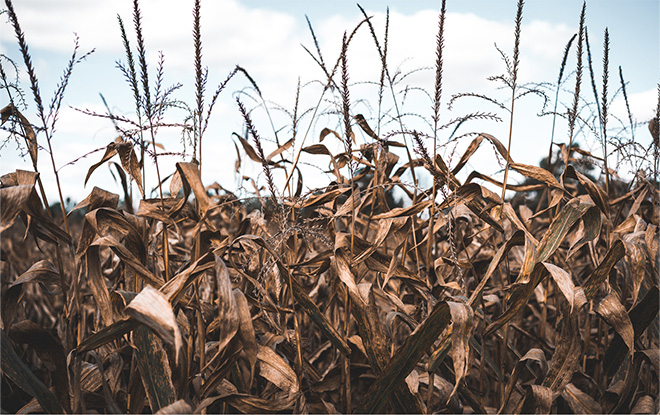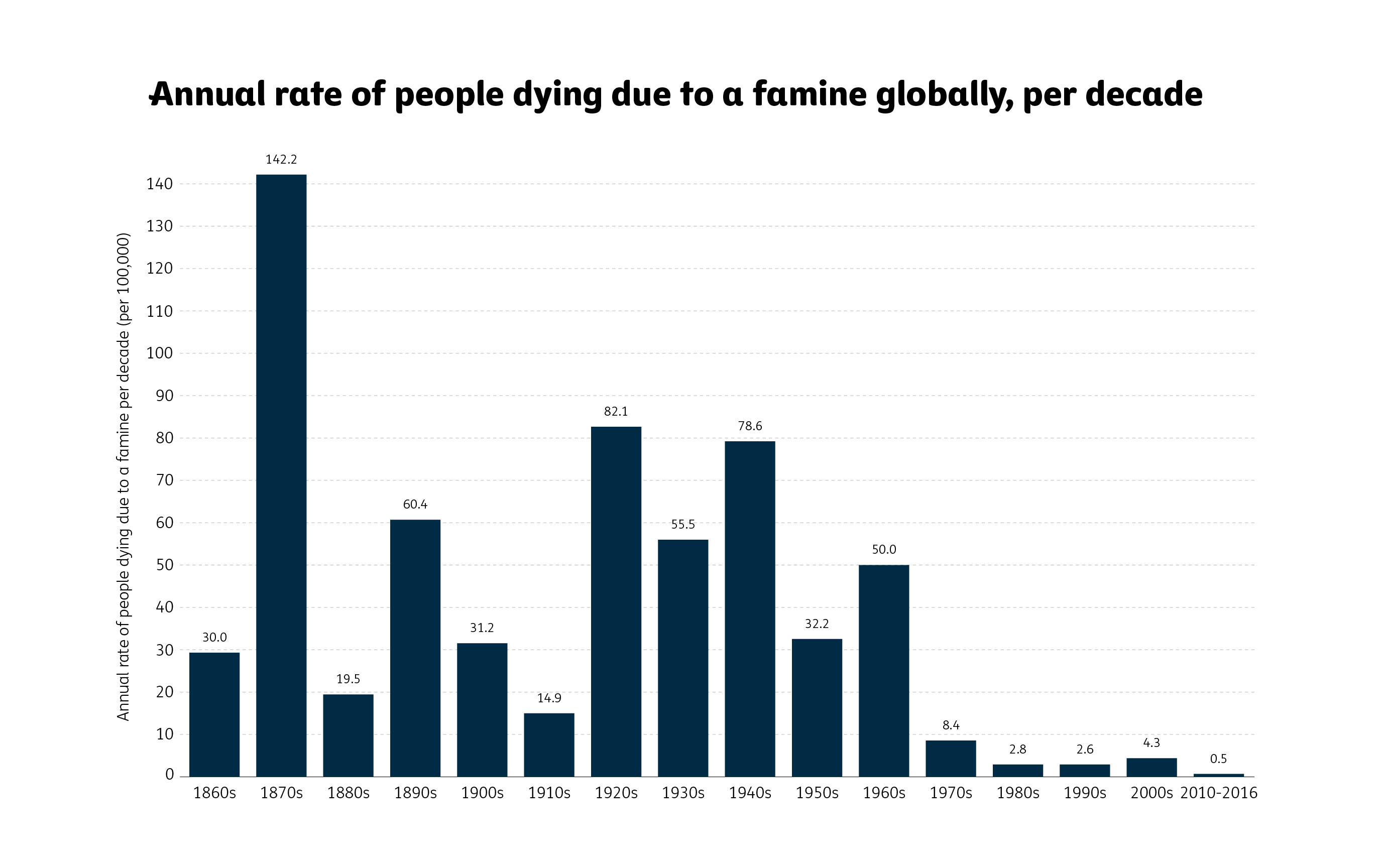What's the difference between a hunger crisis and famine, and what causes them?
4927 0
In a world of plenty, it is hard to understand why people can die from hunger in 2024. No doubt you have heard about the hunger crisis affecting 40 countries and that some are on the brink of famine. A combination of factors such as the global pandemic, climate change, conflict and economic turmoil has put food supplies under immense stress. Even New Zealand families are feeling the effects, but nowhere is this being felt more than in lower-income countries. According to the World Food Programme, approximately 733 million people faced hunger in 2023. But why are these millions of people on the “brink” of famine? What comes before famine?
Act against hunger today, by donating to our East Africa Hunger Crisis Appeal
DONATE
What is hunger?
Let’s start with what is called “food secure”. People are food secure when they have access to sufficient, safe and nutritious food to meet their dietary needs for an active and healthy life. Outside of this definition, people are “food insecure” or struggling to some degree with being hungry. The UN defines hunger as a minimum of one year where a group or community is unable to consume enough calories and nutrients to maintain a healthy weight and carry out basic physical activity.

733 million people faced hunger in 2023.
Why have definitions?
It may seem a little foreign to define hunger. Surely people know when they are hungry and need to eat if they can. But according to the international community, hunger has a definition beyond the one in our dictionaries. Why do we need to know the difference between a hunger crisis and famine? These terms, including hunger, are quantifiable. Believe it or not, defining these terms is playing a part in famine prevention.
What is a hunger crisis?
What is the difference between Hunger Crisis and Famine? On the Integrated Food Security Phase Classification (IPC) scale, a hunger crisis sits at stage 4, where people are facing extreme food shortages, acute malnutrition levels are high, and the risk of hunger-related deaths is rapidly increasing. Recovery of livelihoods at this stage is irreversible, and between 15 and 30 per cent of the population is acutely malnourished. People have access to three or fewer food groups like fruits, grains and vegetables, and take in less than 2,100 calories per day.-scale.png?ver=WgTxYRRRfJbgaHNce2-tOg%3d%3d) What is famine?
What is famine?
Famine is the most severe phase of hunger. It is defined as a complete lack of access to food and other basic needs. At least two out of every 10,000 people die of starvation or disease each day in famine conditions. More than 30 per cent of the population is acutely malnourished, and there is a total loss of income. People just have access to one or two food groups and there is an extreme shortage of calories per person, per day. A total of 20 per cent of families face extreme food shortages.
What factors lead to famine?
The five main contributors are:
· High food prices
· Natural disasters
· Climate change
· Lack of humanitarian access
· Conflict
We can now add pandemic to this list. All these factors can intersect as they have in this hunger crisis.

Drought is a big contributer of famine.
Sudden-onset vs long-onset disasters
For the most part, aid responses are generally reactive. For instance, when a natural disaster strikes, the needs are immediately obvious and public and international support enables an aid response. This is a sudden-onset disaster. Aid agencies like Tearfund rely on the generosity of supporters before they can respond, and when supporters see images on the news, they are moved to help.
But long-onset emergencies like famines happen gradually. The need isn’t immediately seen until people are extremely malnourished or dying, and that is too late. Aid agencies and organisations like the World Food Programme (WFP) can sound the alarm bells but often struggle to raise funds early enough to prevent a crisis. And prevention is far less costly in both lives saved and financially. This is one of the reasons why these terms and definitions are needed. They are markers on a scale that highlight the need so that preventative action can be taken.
Famine prevention is complex
Historically, poor harvests caused extreme hunger. However, they became famines because access to life-saving food was blocked by human action or inaction. Whether it was a government blocking imports and exports, or conflicts disrupting trade and farming, food supplies were scarce, or aid organisations and the international community took too long to react. These human actions or inactions can turn food shortages into deadly famines.
The horrible fact about famines is that they come down to food access. While famines are complex, this makes them to a big degree the fault of the global food system and those who control access and distribution, and the richer countries that contribute the most to climate change. In other words, famines are largely human-made disasters with no easy fix. But using this system is helping us to get better at responding despite the barriers. Tearfund’s work in Ethiopia and other countries across the globe is making people more resilient to climate disasters. By teaching farmers climate adaptation techniques and helping them to work collectively to supply markets, the incomes are giving them more options to survive during difficult times.
Act against hunger today, by donating to our East Africa Hunger Crisis Appeal
DONATE
An early warning system making a difference
But it is not all doom and gloom. Despite climate change and all other factors that play into a hunger crisis and famine, progress is being made. According to health expert Hans Rosling, global undernourishment rates dropped from about 30% in the 1960s to around 10% in the 2010s.
 The number of people dying due to famine is declining. Go to Our World in Data for more information about this graph.
The number of people dying due to famine is declining. Go to Our World in Data for more information about this graph.
In 2004, the IPC scale was introduced as an early famine warning system. You can see this system outlined above. This system was adopted because famines were occurring because action wasn’t taken soon enough to prevent them. This system has made it easier for big international aid agencies and governments to raise money early enough to avert potential famines. This is because they can point to these markers even if the need isn’t obvious to the rest of the world. This is helping to reduce the number of lives lost.
Since this system was adopted by 30 countries, there have been fewer famines despite numerous conflicts and the effects of climate change. Is it perfect? No. Many think the thresholds are still too high. It seems unimaginable that we have to wait until a certain number of people are dying from starvation before using the F-word, but the system is making a difference. It is saving lives and giving the international community data and visibility to raise funds to help prevent famines.
Act against hunger today, by donating to our East Africa Hunger Crisis Appeal
DONATE